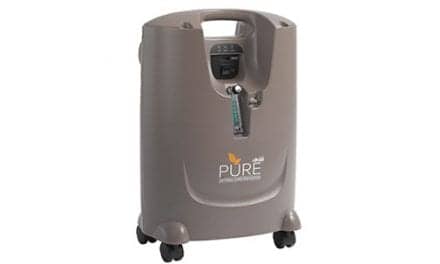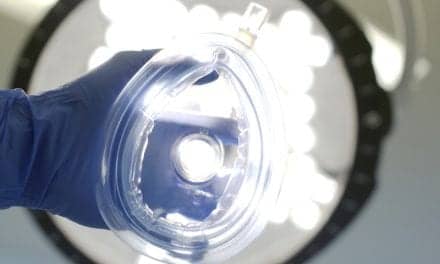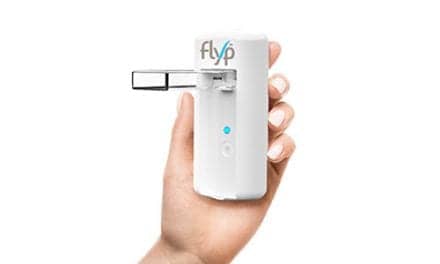RT talks to three ventilator manufacturers about the latest industry trends.
Given the continuing evolution of ventilation technology, this month’s Market Analysis Q&A asked executives from three ventilator manufacturers to take stock of the industry and advances in today’s ventilation devices. They were also invited to share their thoughts on how manufacturers can help health care providers meet their equipment needs amid tight capital budgets, and whether the national ventilator stockpile will really meet the country’s needs in a disaster.
Our respondents include:
- Bob Hamilton, president of Hamilton Medical Inc, Reno, Nev;
- J. Lucky Heeley, vice president of sales and marketing at eVent Medical Inc, Aliso Viejo, Calif; and
- Vance Wilson, senior product manager for NIV Solutions at Philips Hospital Respiratory Care, Carlsbad, Calif.
RT: As ventilation technology continues to evolve, what features and advantages do today’s ventilation devices have over the previous generation?
Hamilton: From what we have seen in the past, I feel we are at a unique point in time when current ventilator technology has started to see exponential growth. We are currently entering the beginning of what I like to call the third generation of ventilation. The first generation vents were literally just mechanical pumps with no more than rate and tidal volume adjustments. The second generation saw the introduction of electronic components that allowed for an increased range of functionality plus the ability to monitor ventilator settings and rudimentary patient conditions with real-time loops and curves. The third generation is making giant leaps in advancing the interaction between the ventilator, patient, and clinician.
New products with touch screens, trending, and more refined menus are making life much easier for the clinician, through both increased ease of use and more readily available patient data. The newest ventilators are also including various modes or technologies that help the ventilator work more harmoniously with the patient. When a ventilator is working with the patient as opposed to against the patient, you will generally see better results as well as quicker weaning and fewer ventilator-induced injuries.
Heeley: As technology has evolved, latest generation ventilators excel in two important ways over previous devices. The first is the controlled precision of breath delivery now available. Software-controlled electronics and mechanical parts now work together to deliver breaths that are controlled in precise measures from beginning to end. Clinicians, now more than ever, have the ability to “shape” the breath that is being delivered, to ensure best match to the patient’s condition. The second way is the continuing improvement seen in the ventilator’s ability to function as a patient monitor. More accurate flow sensor technology, pressure transducers, and CO2 measuring capabilities have elevated the ventilator to an advanced monitor capable of providing an accurate picture of the patient’s current lung condition. These two things combined give clinicians the ability to make the best decisions when deciding how to ventilate a patient.
Wilson: When Phillips Respironics undertook a project to design its next generation NIV focused platform, it was no easy task. We could have gone wild adding every new mode and technological advancement in ventilation, but instead we resisted the temptation. Although there are many technological advancements to choose from, sometimes less is more. Restraint and careful selection of technologies that improve usability rather than adding complexity is the best service we can offer our customers.
RT: Given the rising costs of health care, can new ventilation products maintain their sophisticated features while becoming less expensive? How are manufacturers helping health care providers to not break their capital budgets?
Hamilton: We realize and appreciate this financial challenge and have experienced firsthand the capital budget issues health care providers are struggling with. Due to reduced and/or vanishing capital budgets, many providers are working hard to stretch every day out of the useful lives of their current fleets. The capital process requires greater numbers of approvals and often from administration or the hospital board. We work diligently with hospitals to offer the best value in terms of purchase price, product reliability, low operating costs, and reduced life cycle costs. Hamilton Medical and other ventilator manufacturers work with GPOs and other purchasing groups to try to provide our customers with better prices. However, as most vendors can attest, very few suppliers are willing to reduce the price of materials we use to manufacture our products, so there is little we can do to significantly decrease the overall cost of production.
The one area I believe a manufacturer can affect the most positive change for a health care provider’s bottom line is through continued product innovation. Over the useful life of a typical ventilator, absolute costs, like cost of ownership, will be many times greater than the purchase price. By using the latest production techniques and always striving for better solutions with the consumable items involved in operating the ventilator, we can significantly reduce the cost of ownership. Innovation can also help decrease the overall cost of care as new developments in ventilator automation and treatments can help wean patients more quickly, thus reducing length of stay of a hospital’s most expensive tenants. While neither of these cost reductions directly impacts capital budgets, they do significantly affect the overall costs to the provider.
Heeley: A manufacturer needs to include cost as a factor in their design plan from the beginning. eVent is just nearing the end of the design process of a ventilator. Every step of the way, engineering and product development ensured that the product would meet the sophisticated requirements of the end user and also meet the cost-containment requirements of health care providers worldwide. What needs to be taken into consideration when designing a product is its reliability, allowing for longer warranty periods, and decreased preventative maintenance costs. If this is done, yes, ventilators can maintain their sophistication at a lower cost.
Wilson: Ventilation manufacturers need to, as much as possible, design their systems using components that are widely used in other high volume, consumer market industries. By doing so, they can keep costs low; this helps to control capital budgets. Another factor playing in the hospital’s favor is the expansion of NIV as a primary ventilation modality, which is more often provided by lower cost ventilators. That is what’s driving today’s expanding mid-price range ventilator market.
Lastly is total cost of ownership. A large part of the hospital’s cost of providing ventilatory care is maintenance and consumables. Ventilators that are reliable require fewer PMs and costly overhauls and [those] that use lower cost breathing circuits and other consumables make a big difference in the total cost of ownership.
RT: Tell us about your company’s most recent ventilation products and why they are innovative for the needs of RTs.

Bob Hamilton
J. Lucky Heeley
Vance Wilson
Hamilton: All of our platforms have an award-winning interface that is consistent across all ventilators, making competencies for the staff simple and reducing the chance for error regardless of the ventilator in use or the application. By the end of 2010, we will be releasing six new products to the European market, with the expectation that most of these innovative products will be available by early 2011 in the United States.
The Hamilton-S1 with INTELLiVENT is a fully closed loop ventilator. Having a ventilator that can ventilate a patient with essentially no user input frees RTs from the task of turning knobs for routine adjustments and leaves them free to do what they do best, spend more time at the bedside assessing and addressing patient needs. The Hamilton-C2+ takes our current C2 and expands its current range of intrahospital ICU capabilities to include the ability to ventilate neonates with tidal volumes down to 2 ml, our enhanced lung recruitment tool P/V Tool Pro, plus mainstream and sidestream CO2 measurements. The Hamilton-C1 provides noninvasive performance in a full-featured intensive care ventilator. Its ultracompact design offers maximum flexibility in various user environments, including long-term care, the ICU, or the emergency department.
The Hamilton-T1 has taken an ICU ventilator and put it into a transport vent’s body. This full-featured turbine-driven ventilator can ventilate pediatrics through adults and can accompany a patient within the hospital, between hospitals, on the ground, or in the air. The Hamilton MR1 is a full-featured, highly mobile ICU vent that allows clinicians to take a patient from the ICU to MRI without sacrificing the level of care. I feel this point is critical in maintaining a standard of care as hand bagging a patient or using a standard rate and volume mode on a transport to the MRI can quickly undo any progress that has been made in the ICU. Finally, the Hamilton-N2 is a true neonatal-only vent built on the compact chassis of our C2 ventilator. The N2 was designed to offer full NICU features on a compact and quiet platform.
Heeley: eVent is continuing to improve the function of our Inspiration line of ventilators. Our patented Swiss pneumatic design allows high-performance PSOL valves to provide outstanding breath delivery. Users find exceptional value in our straightforward interface, ease of transport, comprehensive monitoring, and simple preventive maintenance. A unique capability within the Inspiration line is the built-in Clininet Server that allows display of all settings, monitoring, and alarms on computers, the hospital network, or the Internet using standard hardware and Windows software. Practical advantages include standard 5-hour battery, emergency backup compressor, integral nebulizer, heliox, and extreme ease of use. Our Virtual Report software allows you to view multiple patients outside the ICU. Your report has become “real time.”
Wilson: Our most recent product introductions are the Respironics V60 and Trilogy 202 ventilators. The V60 adds new modes of ventilation as well as CPAP with C-Flex. But what our customers talk most about is how they really appreciate the V60’s straightforward simplicity. The addition of the color, 100% touchscreen menus and intelligent layout supports ease of use. Most clinicians can configure and set up the device unassisted within minutes. The V60 also features a 6-hour lithium-ion “smart” battery that tells them exactly how much battery time remains and adds serial communications using an industry standard protocol. The V60 also can be viewed remotely by our service organization and dealers or even receive new software upgrades via a secured remote server.
The Trilogy 202 provides RTs with a great do-it-all portable ventilator. The small size and low weight and hot-swappable battery make it a great intrahospital transport ventilator. It offers a full range of pressure and volume ventilation modes for invasive and noninvasive application, but what’s really innovative is its ability to provide volume ventilation modes using passive leak circuits. So while it supports both active and passive valve circuits, the ability to use lower cost, simpler, and lighter passive circuits greatly reduces costs and simplifies operation. It also solves the problem of inconsistent volume delivery when leaks are present.
RT: Maintaining and servicing ventilation products is important. Can you offer any precautions or advice to RTs about the use or care of any of your products?
Hamilton: In today’s economy, return on investment with your capitol equipment purchase is even more critical. Following the manufacturer’s routine testing and preventative maintenance schedule will minimize unnecessary downtime, keep long-term operating costs down, and keep your warranty valid. RTs and all users in general should also follow the manufacturer’s guidelines for usage to keep the vent in the best condition possible and prevent unnecessary purchases of nonwarranty parts.
An often overlooked time and money saving point is to clearly identify operating anomalies when pulling equipment from patient care. For example, a biomed technician may spend hours testing all aspects of a ventilator’s calibration and operation when the repair tag says “broke” versus finding a defective power cord in a couple of minutes when the repair tag says “intermittent power disconnect alarm.” In addition, input from your biomedical staff can help identify maintenance costs beyond the annual preventative maintenance when considering new equipment purchases.
Heeley: Our ventilator’s solid pneumatic design has very few moving parts and thus seldom if ever has a problem. To get the most consistent results with our ventilators involves a simple startup calibration of the system and proximal flow sensor. This process takes less than a minute, and once complete, the ventilator is calibrated for patient use or storage.
Wilson: The obvious answer is to follow the manufacturer’s recommendations. Stated recommendations are provided for very good reasons. The use of approved and validated accessories as well as performing preventive maintenance and tests per recommendations will help ensure safe and effective use and optimum performance.
RT: Given the results of the AARC’s national ventilator stockpile survey earlier this year, do you think the United States is properly prepared for a disaster? What steps do you think hospitals and disaster preparedness officials should take with regard to the national ventilator stockpile?
Hamilton: As I recall, the official AARC report states, “The inventory results indicate that there are enough mechanical ventilators in the United States to meet nationwide demand IF severity of the pandemic remains similar to the current US experience.” I certainly agree with the fact that this is a rather large “IF,” but overall, in a true case of a major pandemic, I feel we may be in trouble. Typically, most ventilators purchased for the stockpile end up being very cheap, low-end ventilators due to budget constraints. Unfortunately, in the case of H1N1, they would be completely ineffective as they lack the power and the advanced modes needed for the severe cases of ARDS this flu virus is capable of creating.
Another issue that lurks in the dark is staff competencies on these ventilators. As I mentioned above, the vents purchased for the stockpile are lower-end and less capable. As a result, they are almost always going to be different ventilators from different manufacturers than what they use in the ICU. The typical result of these actions is a room full of stockpiled ventilators, which are never used, and when the time comes when they are needed, there could be major problems due to the staffs’ lack of familiarity with the vents.
This is a major benefit of Hamilton’s increased product breadth in which all ventilators have the same user interface. A clinician in the ICU using a G5 will be able to use our compact C1 without additional training, not to mention the fact it will have all the standard ICU modes, making it possible to ventilate even the most severe respiratory cases.
Heeley: This is a difficult and complex question to answer. No single country can be prepared for every single contingency. It is not just a matter of equipment, but the availability of ancillary supplies, and the staffing resources to manage the equipment. eVent Medical is committed to providing the best possible response to this type of situation. When H1N1 became an increasing concern last year, the company held a strategic meeting, and decided to ramp up production and manufacturing inventory to be prepared for any increase in request for product. Precisely because of this corporate decision, eVent was able to respond quickly to urgent requests for equipment for specific countries outside of the United States. It is eVent’s core belief that it is not only a government responsibility to be prepared for a disaster, but also a corporate responsibility.
Wilson: If and when a major disaster or outbreak strikes the United States, there will almost certainly be a shortage of ventilators or, for that matter, qualified clinicians to use them effectively. One valuable source of ventilation equipment includes the large fleets of dedicated noninvasive ventilators. Although there are those who discourage the purchase of dedicated NIV vents for pandemics (something we strongly disagree with), a growing number of countries (eg, United Kingdom) and clinical experts are in fact supporting the judicious use of such devices. There are several reasons for this. On the one hand, dedicated NIV ventilators are recognized as being extremely easy to use and during a health crisis there is bound to be a limited availability of qualified ventilation experts. Ease of use and quick setup will be important considerations for anyone tasked with ventilating sick patients.
Second, there may well be a shortage of acute care/ICU type of invasive ventilators. Using a high-end ventilator on a patient with only mild to moderate respiratory distress could deprive another, sicker patient from the use of that same device. Finally, advances in leak and exhaled air filtration are making the use of NIV far safer for caregivers than ever before. For all of these reasons, dedicated NIV ventilators should remain an important consideration for RT departments during a pandemic disaster. The more comfortable RTs are with using dedicated NIV equipment, the better prepared they will be when a disaster strikes.
Alison Werner is associate editor for RT. For further information, contact [email protected].












